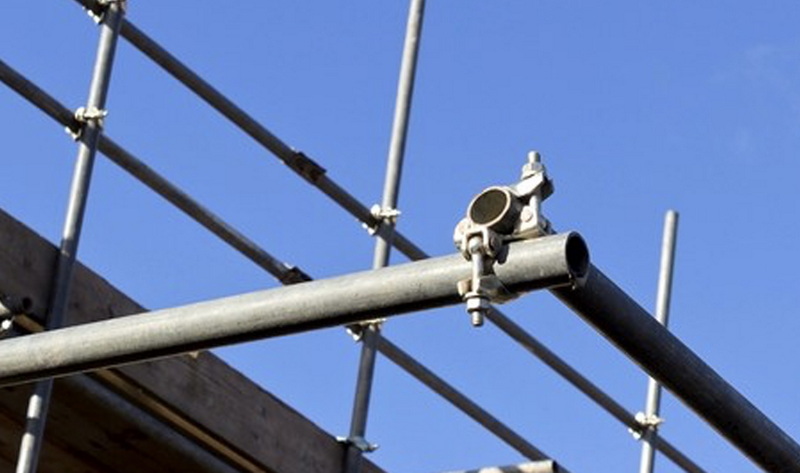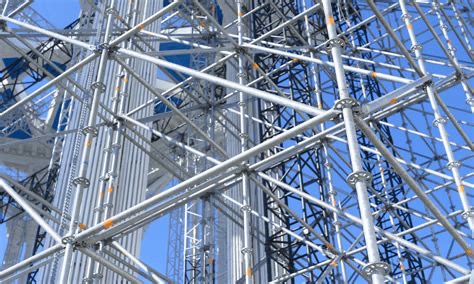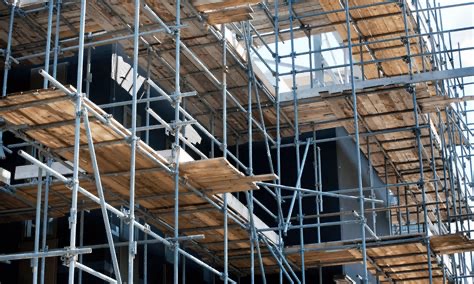Content Menu
● Introduction
● What Is Aluminum Tube and Coupler Scaffolding?
● Key Components and Design
>> 1. Aluminum Tubes
>> 2. Couplers
>> 3. Platforms
>> 4. Base Plates and Adjustable Legs
● Advantages of Aluminum Tube and Coupler Scaffolding
● Main Uses and Applications
>> 1. Building Construction
>> 2. Industrial Maintenance
>> 3. Renovation and Restoration
>> 4. Indoor Projects
>> 5. Complex Structures
>> 6. Temporary Structures
>> 7. Window Cleaning and Decoration
>> 8. Event and Exhibition Setups
● Assembly and Best Practices
● Safety Considerations
● Maintenance and Longevity
● Comparison: Aluminum vs. Steel Tube and Coupler Scaffolding
● Aluminum Tube and Coupler Scaffolding in Modern Construction Trends
● Environmental and Economic Benefits
● Conclusion
● FAQ
>> 1. What are the main benefits of aluminum tube and coupler scaffolding?
>> 2. Can aluminum tube and coupler scaffolding be used outdoors?
>> 3. How high can aluminum tube and coupler scaffolding be built?
>> 4. Is aluminum tube and coupler scaffolding safe for use near electricity?
>> 5. What maintenance is required for aluminum tube and coupler scaffolding?
Aluminum tube and coupler scaffolding is a highly versatile, lightweight, and adaptable scaffolding system widely used in construction, maintenance, industrial, and renovation projects. Its unique combination of modular aluminum tubes and robust couplers enables the creation of custom scaffolding structures suited for complex architectural needs, both indoors and outdoors.

Introduction
Scaffolding is fundamental to safe and efficient construction and maintenance. Among the various types, aluminum tube and coupler scaffolding stands out for its adaptability, lightweight nature, and ability to conform to complex structures. This system's flexibility makes it indispensable for projects where prefabricated or modular systems fall short, especially in environments demanding frequent repositioning or corrosion resistance.
What Is Aluminum Tube and Coupler Scaffolding?
Aluminum tube and coupler scaffolding is a modular system comprising high-strength aluminum tubes connected by forged or pressed couplers. Unlike fixed-frame scaffolding, this system allows for custom configurations, making it ideal for irregular or non-standard structures.
Key Features:
- Modular Design: Tubes and couplers can be assembled in any shape or size.
- Material: Uses 6061-T6 aluminum alloy for tubes, prized for its high tensile strength and corrosion resistance.
- Lightweight: Aluminum tubes are 30–40% lighter than steel, reducing labor fatigue and simplifying assembly.
- Customizable: Couplers enable rigid 90° connections or adjustable angles, accommodating unique architectural requirements.
Key Components and Design
1. Aluminum Tubes
- Standard lengths: 0.3–6.3 meters
- Diameter: ~48.3 mm
- Wall thickness: ~3.2–4 mm
- Weight: 25–30 lbs per 6-foot bay (much lighter than steel)
2. Couplers
- Right Angle (Double) Coupler: Connects tubes at 90° for frames and supports.
- Swivel Coupler: Allows tubes to connect at any angle for diagonal bracing.
- Sleeve Coupler: Joins tubes end-to-end for extensions.
- Other Accessories: Base plates, adjustable legs, guardrails, toeboards.
3. Platforms
- Aluminum or carbon fiber planks for ultra-lightweight setups.
- Non-slip surfaces for safety.
4. Base Plates and Adjustable Legs
- Distribute weight and accommodate uneven floors (up to 12 inches of adjustment).
Advantages of Aluminum Tube and Coupler Scaffolding
- Lightweight & Portable: Easy to carry, assemble, and reposition, especially indoors or in tight spaces like stairwells and elevators.
- Corrosion Resistance: Natural oxide layer prevents rust, making it ideal for humid or corrosive environments (e.g., swimming pools, food processing plants).
- Versatility: Adapts to irregular layouts, arched ceilings, mezzanines, and complex geometries where prefabricated frames cannot fit.
- Non-Sparking & Safe: Suitable for environments with electrical systems or flammable materials, such as chemical plants.
- Customizable Load Capacity: Light-duty systems hold 25 lbs/sq.ft, medium-duty up to 50 lbs/sq.ft. Always check manufacturer ratings.
- Reduced Labor Fatigue: Lower weight means less strain on workers, improving productivity.
- Sustainable: Aluminum is recyclable and aligns with green building practices.
- Easy Transportation: The reduced weight means more material can be transported at once, cutting down on delivery costs and logistical complexity.

Main Uses and Applications
Aluminum tube and coupler scaffolding is exceptionally suited for a wide range of applications:
1. Building Construction
- Stable platforms for bricklaying, plastering, painting, and facade work.
2. Industrial Maintenance
- Used in refineries, petrochemical plants, and power plants for maintenance, repair, and installation where corrosion resistance and non-sparking properties are essential.
3. Renovation and Restoration
- Ideal for historic or irregular buildings, allowing custom scaffolding to fit unique shapes and surfaces.
4. Indoor Projects
- Perfect for malls, auditoriums, sports complexes, and areas with sensitive flooring due to lightweight and non-marking properties.
5. Complex Structures
- Adaptable for bridges, tunnels, domes, archways, and other non-standard geometries.
6. Temporary Structures
- Used for ramps, stands, stages, birdcage scaffolding, and suspended platforms.
7. Window Cleaning and Decoration
- Provides safe access for cleaning, signage, and decorative work on tall or awkwardly shaped buildings.
8. Event and Exhibition Setups
- Aluminum tube and coupler scaffolding is frequently used to build temporary stages, lighting towers, and camera platforms for concerts, sports events, and exhibitions due to its fast assembly and disassembly.
Assembly and Best Practices
Step-by-Step Assembly:
1. Plan the Layout: Determine the required height, width, and configuration.
2. Install Base Plates: Place on stable, level ground or use rubber mats to distribute weight.
3. Assemble Standards (Verticals): Secure upright tubes with right angle couplers.
4. Add Ledgers and Braces: Use horizontal and diagonal tubes with appropriate couplers for stability.
5. Install Platforms: Place aluminum or carbon fiber planks, ensuring secure fit.
6. Add Guardrails and Toeboards: Essential for fall protection and compliance.
7. Adjust for Level: Use adjustable legs to compensate for uneven floors.
8. Inspect: Check all connections, couplers, and platforms before use.
Tools: Standard wrenches or quick-release couplers; no special tools required.
Pro Tip: Pre-assemble sections on the ground when possible to speed up erection and enhance safety.
Best Practices:
- Use color-coded tagging systems to indicate scaffold status (safe, unsafe, under inspection).
- Assign a competent person to supervise assembly and inspection.
- Document all inspections and modifications for compliance and safety audits.
Safety Considerations
- Load Limits: Never exceed the rated capacity (light-duty: 25 lbs/sq.ft; medium-duty: 50 lbs/sq.ft).
- Guardrails and Toeboards: Always install on platforms above 6 feet to prevent falls and dropped objects.
- Stable Foundations: Use base plates and ensure ground is level and firm.
- Regular Inspections: Check for damaged tubes, worn couplers, and loose fittings before each use.
- Worker Training: Ensure all users are trained in assembly, use, and emergency procedures.
- Engineering Approval: Required for setups above 40–50 feet or with unusual loads or configurations.
- Tagging System: Use color-coded tags to indicate scaffold status (safe, unsafe, under inspection).
- Weather Awareness: For outdoor use, monitor for high winds, storms, or icy conditions that could affect stability.
Maintenance and Longevity
- Corrosion Resistance: Aluminum's natural oxide layer resists rust, requiring minimal maintenance compared to steel.
- Regular Cleaning: Remove dust, debris, and chemicals after each use.
- Inspection: Check for cracks, dents, and coupler wear before and after each project.
- Storage: Store tubes and couplers in a dry, well-ventilated area; use bins or racks to prevent loss and damage.
- Annual Anti-Corrosion Treatment: Not usually needed for aluminum, but inspect couplers (especially steel ones) and apply oil or replace as needed.
- Repair and Replacement: Straighten bent tubes and replace damaged couplers promptly to maintain safety and extend lifespan.
Comparison: Aluminum vs. Steel Tube and Coupler Scaffolding
| Feature | Aluminum Tube & Coupler Scaffolding | Steel Tube & Coupler Scaffolding |
| Weight | 30–40% lighter, easier to handle | Heavier, more labor-intensive |
| Corrosion Resistance | Excellent, no rust | Requires coatings, prone to rust |
| Strength | High (for most indoor/medium loads) | Higher, suitable for heavy-duty |
| Portability | Superior, ideal for frequent moves | Less portable |
| Cost | Higher initial, lower maintenance | Lower initial, higher maintenance |
| Best For | Indoor, sensitive, complex projects | Heavy-duty, outdoor, long-term |
Aluminum Tube and Coupler Scaffolding in Modern Construction Trends
The construction industry is increasingly moving toward modular, lightweight, and sustainable solutions. Aluminum tube and coupler scaffolding fits perfectly into these trends:
- Prefabrication and Modular Construction: The adaptability of aluminum tube and coupler scaffolding supports offsite construction and rapid onsite assembly.
- Green Building Initiatives: Aluminum's recyclability and lower transportation emissions contribute to LEED credits and other sustainability certifications.
- Urban Construction: Its lightweight nature allows for use in high-rise projects where crane or elevator access is limited, and minimal disruption is crucial.
- Safety Innovations: Newer coupler designs feature quick-release mechanisms and integrated safety locks, further reducing assembly time and risk.
Environmental and Economic Benefits
- Reduced Carbon Footprint: Lighter scaffolding means fewer truckloads and less fuel consumption during transport.
- Lower Labor Costs: Faster assembly and less physical strain reduce total man-hours needed.
- Recyclability: At the end of its life, aluminum scaffolding can be recycled with minimal energy input, supporting circular economy principles.
- Long-Term Value: Despite higher upfront costs, the durability and low maintenance of aluminum tube and coupler scaffolding translate to significant savings over time.
Conclusion
Aluminum tube and coupler scaffolding is a game-changer for projects demanding flexibility, portability, and corrosion resistance. Its modular nature allows it to adapt to complex structures, making it ideal for building construction, industrial maintenance, renovations, and specialized indoor applications. While it may not replace steel for the heaviest loads or tallest structures, its lightweight, rustproof design and ease of assembly make it the preferred choice for most modern, sustainable, and safety-conscious construction environments. With proper assembly, maintenance, and adherence to safety standards, aluminum tube and coupler scaffolding delivers unmatched performance and efficiency.

FAQ
1. What are the main benefits of aluminum tube and coupler scaffolding?
Aluminum tube and coupler scaffolding is lightweight, corrosion-resistant, easy to assemble, and highly adaptable to complex or irregular structures. It reduces labor fatigue, is safe near electrical or flammable environments, and is ideal for indoor or sensitive areas.
2. Can aluminum tube and coupler scaffolding be used outdoors?
Yes, its corrosion resistance makes it suitable for outdoor use, but for very heavy-duty or long-term outdoor projects, steel may be preferred due to higher load capacity.
3. How high can aluminum tube and coupler scaffolding be built?
Typically up to 40–50 feet without engineering approval. Taller structures require professional engineering review to ensure safety and stability.
4. Is aluminum tube and coupler scaffolding safe for use near electricity?
Yes, aluminum is non-sparking and, when properly configured, is safe for use near electrical systems. However, always follow site-specific electrical safety protocols.
5. What maintenance is required for aluminum tube and coupler scaffolding?
Minimal maintenance is needed: regular inspection for damage, cleaning after use, and proper storage. Couplers, especially if steel, should be checked for rust and lubricated or replaced as needed.






















